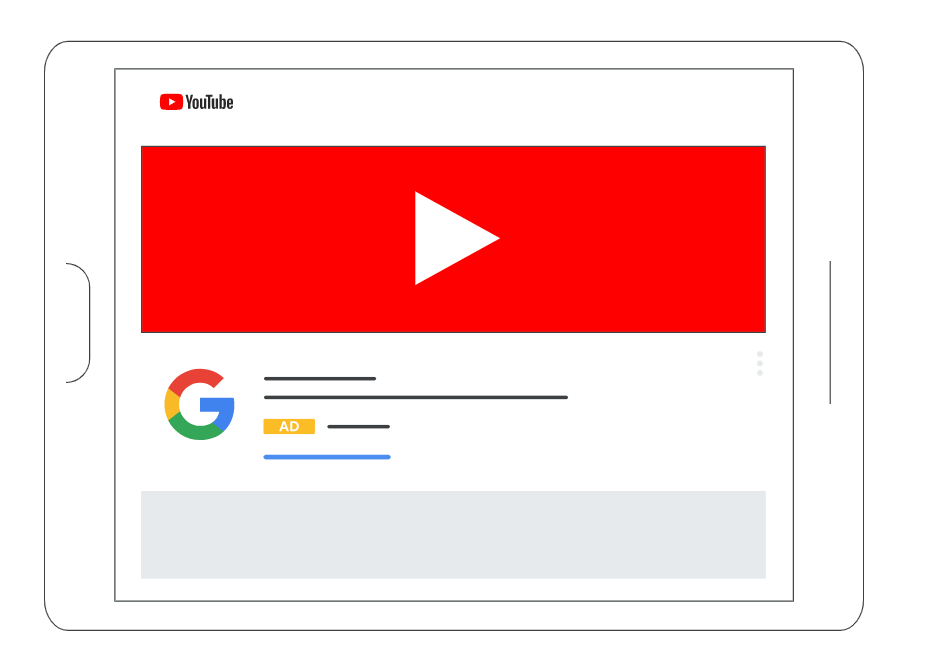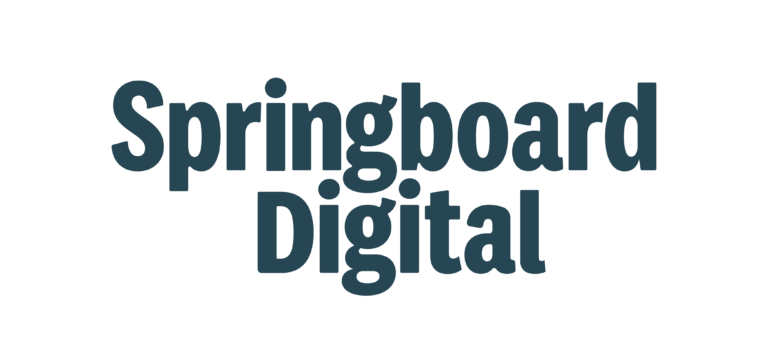Google owns approximately 92% of the global search engine market, so it makes sense that their paid digital advertising platform, Google Ads, is a non-negotiable for marketers and business owners. Google Ads shows your ads to people who are actively searching for a product or service similar to yours, which will help drive quality traffic to your website.
Platforms like Google Ads are complex. So, whether you’re considering beginning paid advertising or you want to make the most of your current Google Ads account, we’ve compiled the ultimate guide to Google Ads. Here’s what we’ll cover:
- What Is Google Ads?
- How Does Google Ads Work?
- How Much Does Google Ads Cost?
- Is Google Ads Effective For Any Sized Business?
- What Are Google’s Networks?
- What Campaign Types Can I Use?
- What Ad Types Can I Use?
- What Are The Benefits Of Using Google Ads?
What Is Google Ads?
Have you ever noticed ads placed at the top of your Google search results page? This is the foundation of Google Ads. Google Ads allows businesses to pay to have their ads appear above organic search results when users search certain queries – it is usually noted with an ‘Ad’ indicator.
With more than 90% of consumer traffic going to websites that rank on the first page of Google’s search results, it’s easy to see why an effective Google Ads strategy can give your business an advantage over competitors.
It’s important to note that when using Google Ads, you can opt in to have your ads displayed across not only search results, but all of Google’s products and even displayed on the websites customers are reading when they use Google.
How Does Google Ads Work?
Ads appear for certain search queries because you, the advertiser, chose a list of keywords that you believe your customers will use when trying to find your product and bid on them. However, there are obviously far too many advertisers targeting the same queries for everyone’s ad to appear. Therefore, Google conducts an instant mini ‘auction’ where each competitor bids for ad spots, based around key factors including:
1. Bid Amount: the amount you’re willing to pay for each click on your ad.
2. Ad Quality: calculated by Google using a real-time metric called Quality Score, which is derived from information such as how likely your ad is to be clicked on and how closely your ad matches the searcher’s intent.
3. Landing Page Quality & Relevance: following landing page best practices helps your website appear more relevant and trustworthy. We put together our 5 top tips for creating a great landing page earlier this year to tackle landing page optimisation in bite-sized pieces.
How Much Does Google Ads Cost?
Google Ads is known as a ‘Pay-Per-Click’ (PPC) advertising platform, meaning you as an advertiser will pay a certain cost (cost-per-click or CPC) each time someone clicks on your ad.
There’s no ‘one size fits all’ answer for this question, as CPC can differ from industry to industry, based on competitiveness of keyword bidding and ad types. If you’re just getting started and are interested in the average bid amounts of keywords in each industry, Google’s keyword planner is a great place to start to begin to cost out a campaign. On average, according to Google themselves, businesses make $8 in profit for every $1 spent on Google Ads. This means Google Ads is almost always a worthy investment of your digital marketing budget.
The beauty of Google advertising continues in its ability to give advertisers complete control over their own budgeting. By setting an average daily budget, Google’s machine learning will never go above the average monthly amount you choose to spend, and you can even set a maximum CPC per keyword bid if you’re really interested in getting granular. Estimating how much you need to spend on Google Ads each month to get the best results can be tricky, but there are plenty of guides out there to help you get a rough idea on which allocation works best for you.
Is Google Ads Effective For Any Sized Business?
Due to its scalability and flexibility, Google Ads can help any business of any size and industry gain a positive return on investment. Targeting tools such as keyword targeting, audiences, demographics, locations, ad scheduling, and devices mean you can narrow or expand the size of your audience at will. The chances are, as a small business, you’ll have unique needs and this keeps you in control and makes sure you’re only working within parameters you have chosen. Google can help you access huge, high-traffic/high-competition audiences, but it also helps you narrow down the perfect niche to funnel those quality customers and leads onto your site.
Creating an online presence for your brand is often about trend watching both externally and internally. Google further provides small businesses with the opportunity to access key internal metrics and figure out where they can tap into larger industry trends. This can assist in answering questions like:
- What are people searching for and how does my business’ offer fit into this?
- What are my competitors doing and how many do I have?
- Which of my products/offerings are gaining the most attention online?
Even if you start small, Google provides you with instant insights on your industry, your audiences, and your account’s performance which can help grow your brand awareness and revenue. Google recognises that small business owners use their platform, and even creates regular blog posts on The Keyword focusing on how Google Ads helps small businesses succeed online.
Here at Springboard, we’ve seen Google Ads help our small business clients go from backyard photoshoots to professional imagery and experience a 366% increase in leads, proving it’s effective for businesses of any size.
What Are Google’s Networks?
Google Ads gives you incredible control over how and where your ads show. Part of the way the platform achieves this is through the choice of using one of two (or both) networks – the Search Network and Display Network.
The Search Network consists of everything that comes up in the Google results page, along with Google sites like Maps and Shopping. The Display Network shows your ads on a potential 200 million websites across the internet that partner with Google, alongside Google’s sites like Youtube and Gmail. Display ads are the advertisements you might see while reading your local newspaper online or watching a video.
Using the correct networks is a key part of a Google Ads strategy. The most important difference between the two is your intent. When users see your ads in their search engine results page, the ads have been triggered by a search bar query, meaning your product or service is an answer to their question. Display ads, although they will only be shown to relevant audiences, are shown while users browse other sites without the specific intent to purchase your product. Therefore, Display ads target users who are closer to the top of the funnel than Search ads, creating awareness through passive intent. Each network provides its own unique benefit, and the choice of which to use for each campaign will depend on your business goals.
What Campaign Types Can I Use?
Before you begin your PPC campaign on Google, you’ll be asked what campaign type you want to use. Campaigns create how a Google Ads account is structured.
Campaigns house ad groups and are centered around Google’s advertising networks. Google’s campaign types are ever-changing, as Google continually implements new machine learning algorithms & features, empowering advertisers to more effectively reach their desired audiences. Therefore, this list is likely to not be exhaustive in the coming months and years, but merely a snapshot of what’s on offer:
- Search: shows ads purely on the Search network. This campaign type is the most useful for driving sales and leads to your website.
- Performance Max: a new campaign type across all of Google’s platforms, including search, display, video, & discovery. Google’s machine learning will use your conversion goals & 1st party data alongside smart bidding to find potential customers across all of Google’s advertising channels. Smart Shopping and Local campaign types will be automatically upgrading to Performance Max this year (2022) from July through to September, as Performance Max combines and adds new automation to the foundational features of these campaigns.
- Display: image ads shown purely on the Display network. Display campaigns assist in driving reach and brand awareness.
- Video: video ads on Youtube and through Google video partners.
- Discovery: visual ads which run on Google Discover, Youtube, and Gmail.
- App: Google sources text ideas, images, and various assets from an app store listing to create ads across networks.
- Smart: advertisers create a singular ad and choose keyword themes, which Google then uses to automatically create ads and serve them across networks.
To be automatically upgraded to Performance Max by September 2022:
- Local: designed to promote offline business goals, local campaigns appear across Google’s networks to match potential customer’s activity to your in-store location.
- Smart Shopping: Google’s Merchant Center product data is used to create ads across networks and produce great results for eCommerce clients.
What Ad Types Can I Use?
Text
.
This ad type consists of words only. Currently, Google enables Google Ads users to create three different text ad types: Expanded Text Ads (ETAs), Responsive Search Ads (RTAs), and Dynamic Search Ads (DSAs). However, in the same way that Google is consistently improving its campaign types, Google consistently optimises ad types available to advertisers. As a result, in June 2022, Google is removing the ability to create or edit Expanded Text Ads in favour of Responsive Search Ads and Dynamic Search Ads.
All text ads have a similar search result appearance, but the differences appear in how Google creates these ads. For simplicity’s sake, we’ll just talk about RSAs and DSAs, as it seems these are here to stay.
Responsive Search Ads
RSAs test different combinations of headlines and descriptions (input by the advertiser) to adapt content to align with search terms. This makes ads more relevant to the searcher, bringing in higher volumes of better quality traffic. Between 15 different headline options and 4 different description options, it’s calculated this can provide searchers with a potential 43,680 different ads to peruse, making it pretty clear why Google is encouraging advertisers to use this ad type. In 2022, Google is sunsetting Expanded Text Ads in favour of these Responsive Search ads.
Dynamic Search Ads
DSAs make ad setup easier than it ever has been before as they forgo the manual creation of keywords and ads entirely, instead dynamically generating ads and ad copy from your website or product feed to answer user’s queries. Google utilises its uber-powerful web crawling technology to create ads based on your most relevant landing pages. DSAs are great for complimenting your existing keyword-based campaigns, as they can fill the gaps of search queries you may not have thought to target.
Various ad extensions can also be applied to text ads to assist your audience in gathering the information they need from your ads. Text ads can be run across both the Search and Display networks.
Image
Image ads appear on websites and other areas in the Display network, and will lead to your website’s landing page when clicked on. As discussed earlier, ads on the Display network are targeting lower intent users meaning image ads mostly generate awareness and interest for your products or services, as opposed to generating instant conversions.
App
App install ads target a range of networks and, much like RSAs and DSAs, Google will leverage its powerful machine learning capabilities to automatically design ads for you. Upload text, some visual assets, and select which locations you want to run your ads for and you’ll be up and running.
Video

Video ads run on Youtube and Google’s video partner sites, usually as those 15 second videos which come up right before you watch something on Youtube. These are great for generating brand awareness for your brand, and reaching the correct interest or location based audiences based on what your audience is watching.
Shopping
Shopping ads are solely for eCommerce providers and, instead of keywords, use Google Merchant Center product information to show shopping ads in Google search results alongside the ‘shopping’ tab.
Call-Only Ads
These ones are pretty self explanatory. Mobile-only, and designed to encourage calls to your business.
What Are The Benefits Of Using Google Ads?
So, now you (hopefully) understand the basics of what’s involved in a Google Ads campaign. Although, we understand that what’s most important is the potential impact running paid ads could have on the success and longevity of your business. Here’s a quick summary of a few concepts we’ve spoken about which highlight why you should consider adding PPC to your marketing ammunition:
Quick results
If you’re looking to quickly channel more traffic to your website, Google Ads is widely regarded as one of the fastest digital marketing strategies. Activities like SEO are crucial for long-term organic customer acquisition and retention, but understandably take a general minimum of 6 months to see a tangible result. With Google Ads, it’s possible to create an account and see data begin to flow into it within a week or less.
Suits all budgets and grows with you
By enabling its users to set a daily budget, your Google Ads spend can easily increase as your businesses’ revenue grows. Google Ads is a scalable platform too, meaning that if your campaigns are going great, you can increase the budget and the amount of interaction and conversions your ads are receiving will increase in tandem. On the other hand, if you’re not finding the success you were after with a campaign, its budget can be reduced to funnel spend into the campaigns, ad groups, or keywords which are flourishing.
Targeting
Every business has a unique target audience, making it critical for ad platforms to enable you to reach the highest quality consumers possible. Google Ads is exemplary in this regard. Between keywords, locations, demographic targeting, ad frequency, devices, and even remarketing, sifting down to your target customer is accessible and simplified.
Audience intent
Using Google Ads taps into the unique advantage all Search Engine Marketing platforms possess: the ability to show ads to customers who are already actively looking to either gather information about or buy your product/service offering. Therefore, the nature of search engines allow them to dominate conversion rates across advertising platforms.
Reach
So, we’ve established that search engine marketing has the highest conversion rate compared to other advertising channels. However, in the graph above, Bing actually tails Google, but the graph below tells the full story. Google is a goliath in the search engine market, with 92% of all searches being performed on Google. As a business owner, this indicates that your target consumers are likely to be using Google, making Google Ads the best platform to reach the largest audience.
Competition
Lastly, it’s probable that your direct competitors are using Google Ads, too. By throwing your hat into the ring, you can begin to rank alongside and direct traffic away from competitors sites onto yours, swaying traffic which would ordinarily just click on the first result they see after they search.
Now that we’ve touched on everything, let’s sum it all up.
Final Tips & Notes
Google Ads can be a powerful platform to grow your business. Due to its scalability and flexibility, Google Ads can help any business of any size and industry gain a positive return on investment. With a broad range of campaign types and ad types to choose from, Google provides its users with incredible scope to create advertising based on their unique business needs.
That said, it can be confusing to navigate, particularly alongside the rest of everyday business activity. At Springboard, we specialise in helping businesses grow using Google Ads. Get in touch with Springboard today to learn how we can help you achieve your business goals with the right combination of digital marketing tactics.






